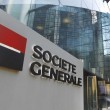BIAN adds business scenarios to banking IT standards framework

Tesselaar: soaring banking technology costs are holding financial institutions back
The Banking Industry Architecture Network has released a new version of its industry standard framework containing more than 180 business scenarios for banks.
BIAN is a consortium of banks, banking software developers and service providers that have been working since 2008 to standardise aspects of banking IT systems.
To date it has identified 280 unique business capabilities, which it calls Service Domains. The new version of the framework, Service Landscape 3.0, identifies how these Service Domains interact in real-life business scenarios. More than 100 new business scenarios have been added to the reference structure, including back-office, trade finance and sales.
“Today represents a significant landmark for BIAN – with more than 100 new business scenarios built into the Service Landscape, the network has drilled down to bank-specific capabilities, which will ultimately support the industry to adopt a standard IT infrastructure models,” said Hans Tesselaar, executive director of BIAN. “Soaring banking technology costs are holding financial institutions back from providing the best possible service to their customers and making updates complex, time-consuming, risky and costly. Implementing the BIAN standard will encourage greater business efficiency across banks, so that they can compete in the areas that really matter – namely providing a great service to customers.”
The intention of BIAN’s work is to create a comprehensive Service Landscape that will enable banks to cut IT infrastructure complexity and integration costs. It is built using a service-oriented architecture that “separates pre-defined services into core IT building blocks and identifies the necessary links between them”. The aim is to implement this on an industry and world-wide scale “to enable banks to develop innovative technology offerings without battling through aging or tangled enterprise architecture and suffering the IT outages to which this can lead”.
Based on a single repository in modelling tool MagicDraw, Service Landscape 3.0 gives BIAN members access to a complete Unified Modelling Language model of the BIAN Service Landscape. (For non-BIAN members an HTML version, free of charge, is available.)
Alongside identifying key building blocks of banking functions, BIAN has released how-to guides to accompany Service Landscape 3.0. Aimed at audiences including technical architects, BIAN members and other financial institutions, the guides detail the theory and design practices behind the BIAN Service Landscape, the tools and templates used to capture content and directions for applying the BIAN Standard.
The organisation is hosting a free webinar explaining how banks can embrace its Service Landscape on 15 April 2014 at 1500 Central European Time.
BIAN bank members include ABN Amro, Commonwealth Bank, Credit Suisse, DBS, Deutsche Bank, Erste, ING, KFW, PNC, Postbank, Rabobank, Société Générale, UBS and Unicredit. Vendor members include Allshare, Asseco, Axxiome, Capital Banking Solutions, CGI, Core, Evry, Fernbach, HCL Axon, IBM, IDRBT, IFB, Infosys, Innobis, Microsoft, Nucleus Software, SAP, SCI. SMU, Sopra Banking Software, SunGard, Swift, TCS and Temenos.











































